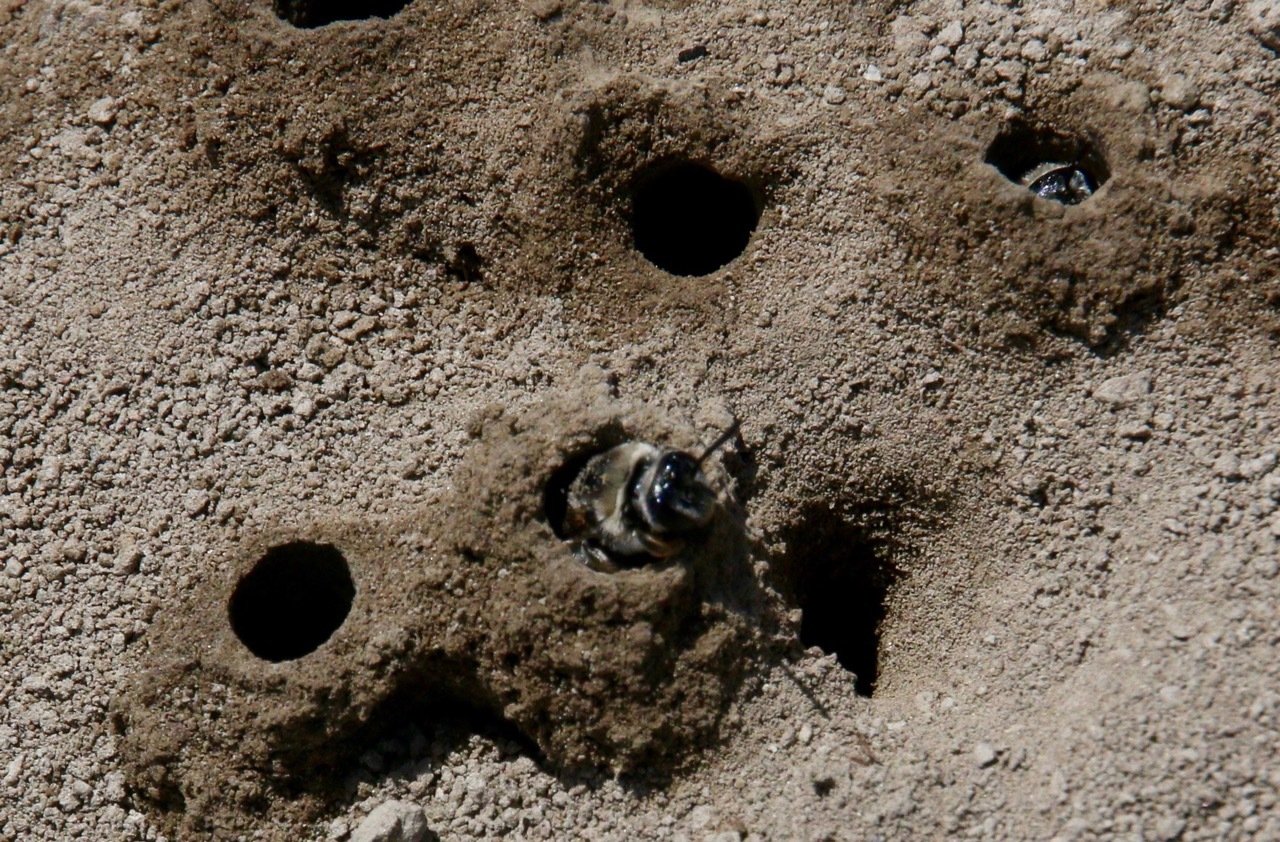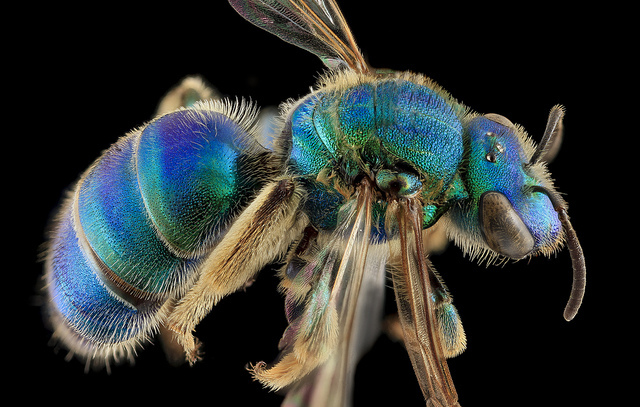A Place to Call Home
Guest Blog by Paige Embry
For many people the word bee evokes an image of honey bees: a band of sisters living together in a hive, divvying up the chores while their mother, the queen, lays eggs. That’s not how most bees live.
The world has around 20,000 species of bees, the U.S. and Canada have around 4000 species of native bees, and these are astonishingly diverse. Nevertheless, they can be grouped together in a variety of ways, and one of those ways is by sociality. Honey bees inhabit one end of the social spectrum and the vast majority of bees lie at the other end; these are the solitary bees. Here’s how life works for a typical solitary bee. Males and females emerge from their winter sleep. They mate. The males soon die and the females find a hole that will make a good nest and spend the rest of their lives gathering pollen and nectar and laying eggs (with a bit of time devoted to eating and sleeping). They do all of this alone. Every single one of these solitary females needs her own place to lay her eggs and this leads to another way of grouping bees—by where they choose to nest—with the vast majority, around 70%, nesting underground.

Most ground-nesting bees dig their own hole, sometimes to several feet deep which seems like an astonishing feat given that most of these bees are half an inch or less in length. Quite a few bee species are willing to nest gregariously with many individual bees digging holes right next to each other, sometimes only inches apart. Occasionally, bees will share an entrance hole with each bee then digging off in their own direction once they are underground. Dry ground under hedges, scruffy lawn, hard-packed road edge, clay banks, loose and sandy soil—there are bees that choose to nest in all these areas.
Some bees in the genus Diadasia add impressive entrance halls to their underground domains—they look like chimneys or turrets. One of these bees is Diadasia afflicta. To make a chimney the bee first digs the underground portion of the nest, throwing bits of dirt out of the hole. Then she sculpts her chimney out of the dirt using a nectar/saliva mixture as cement. The chimney may continue to grow though. Researchers studying the bee found that bits of pollen embedded in bee poop would periodically be added to the top of the chimney in the night.

Since 70% of bees nest below ground, clearly the other 30% nest aboveground, many in pre-existing tubular holes like old beetle burrows or the center of pithy stems. Again, most of these bees are solitary so each has her own hole. A female gathers enough pollen and nectar for one babe, lays the egg and walls it all off, gradually filling up the tube. What she uses for wall material can be quite variable, as can some of the choices made for the pre-existing “holes.”
For example, bees in the genus Osmia have been found nesting in everything from beetle burrows and reeds to snail shells and old wasp nests. They mostly make the walls between nest cells out of chewed up bits of leaves, which may or may not have bits of sand or mud added, but some build walls of mud or even dung.
Ways to help bees often focus on providing plants with flowers that have lots of pollen and/or nectar. To help honey bees, this is likely enough (along with laying off pesticides) because many honey bees are managed and live in boxes we provide for them. Wild native bees also need those good floral resources, but they need appropriate nest spots too. Many bees don’t fly far from their nests, perhaps only several hundred feet for some, so providing scattered patches of undisturbed bare ground and potential aboveground nest holes—rotten logs, pithy stems, cut reeds, drilled wooden blocks—near desirable flowers will increase the chance of bees setting up home in an area. And once a bee species finds a good place to call home, their descendants may return to that nest area year after year.
